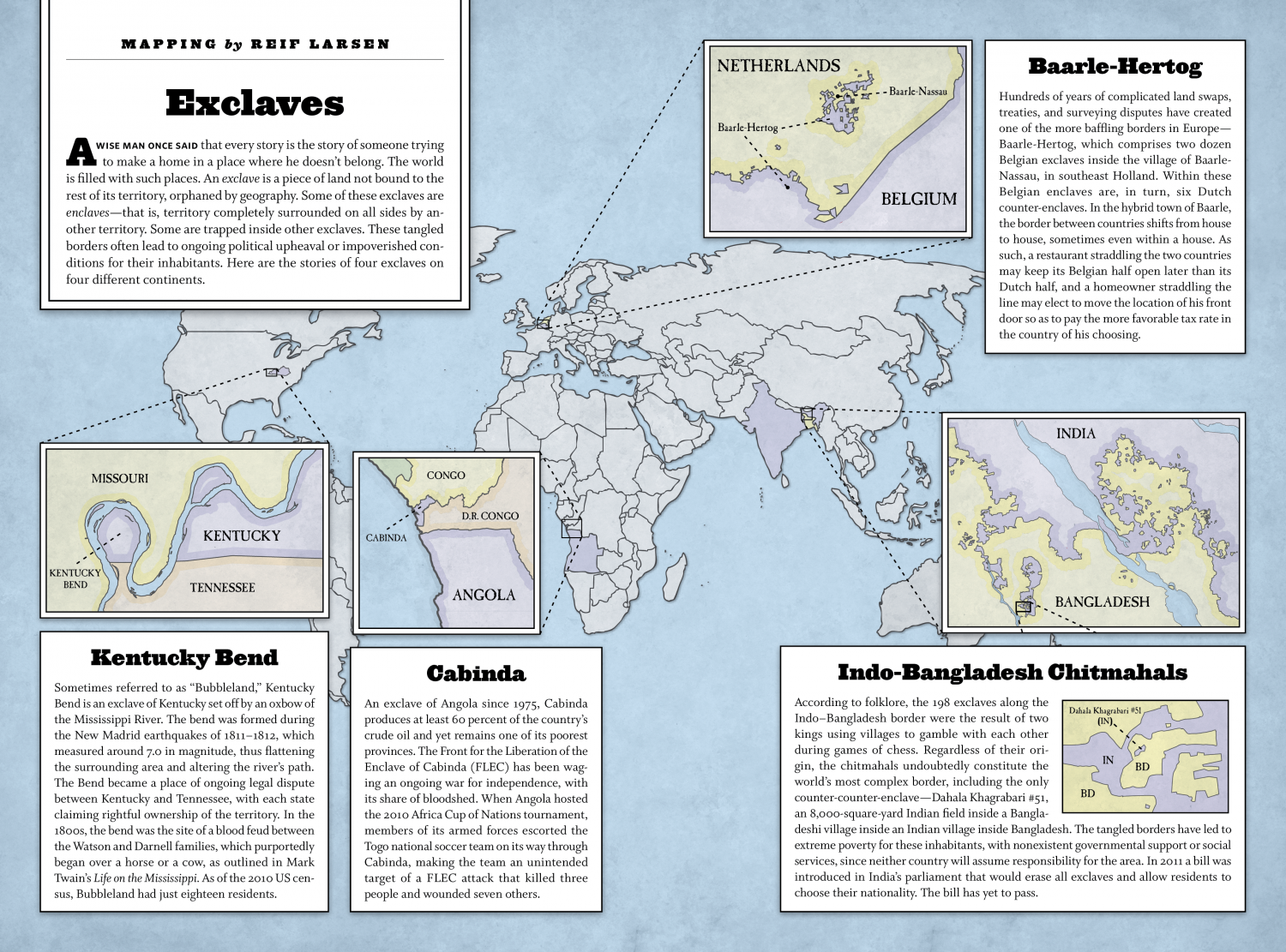
A wise man once said that every story is the story of someone trying to make a home in a place where he doesn’t belong. The world is filled with such places. An exclave is a piece of land not bound to the rest of its territory, orphaned by geography. Some of these exclaves are enclaves—that is, territory completely surrounded on all sides by another territory. Some are trapped inside other exclaves. These tangled borders often lead to ongoing political upheaval or impoverished conditions for their inhabitants. Here are the stories of four exclaves on four different continents.
Kentucky Bend
Sometimes referred to as “Bubbleland,” Kentucky Bend is an exclave of Kentucky set off by an oxbow of the Mississippi River. The bend was formed during the New Madrid earthquakes of 1811–1812, which measured around 7.0 in magnitude, thus flattening the surrounding area and altering the river’s path. The Bend became a place of ongoing legal dispute between Kentucky and Tennessee, with each state claiming rightful ownership of the territory. In the 1800s, the bend was the site of a blood feud between the Watson and Darnell families, which purportedly began over a horse or a cow, as outlined in Mark Twain’s Life on the Mississippi. As of the 2010 US census, Bubbleland had just eighteen residents.
Cabinda
An exclave of Angola since 1975, Cabinda produces at least 60 percent of the country’s crude oil and yet remains one of its poorest provinces. The Front for the Liberation of the Enclave of Cabinda (FLEC) has been waging an ongoing war for independence, with its share of bloodshed. When Angola hosted the 2010 Africa Cup of Nations tournament, members of its armed forces escorted the Togo national soccer team on its way through Cabinda, making the team an unintended target of a FLEC attack that killed three people and wounded seven others.
Baarle-Hertog
Hundreds of years of complicated land swaps, treaties, and surveying disputes have created one of the more baffling borders in Europe—Baarle-Hertog, which comprises two dozen Belgian exclaves inside the village of Baarle-Nassau, in southeast Holland. Within these Belgian enclaves are, in turn, six Dutch counter-enclaves. In the hybrid town of Baarle, the border between countries shifts from house to house, sometimes even within a house. As such, a restaurant straddling the two countries may keep its Belgian half open later than its Dutch half, and a homeowner straddling the line may elect to move the location of his front door so as to pay the more favorable tax rate in the country of his choosing.
Indo-Bangladesh Chitmahals
According to folklore, the 198 exclaves along the Indo–Bangladesh border were the result of two kings using villages to gamble with each other during games of chess. Regardless of their origin, the chitmahals undoubtedly constitute the world’s most complex border, including the only counter-counter-enclave—Dahala Khagrabari #51, an 8,000-square-yard Indian field inside a Bangladeshi village inside an Indian village inside Bangladesh. The tangled borders have led to extreme poverty for these inhabitants, with nonexistent governmental support or social services, since neither country will assume responsibility for the area. In 2011 a bill was introduced in India’s parliament that would erase all exclaves and allow residents to choose their nationality. The bill has yet to pass.






